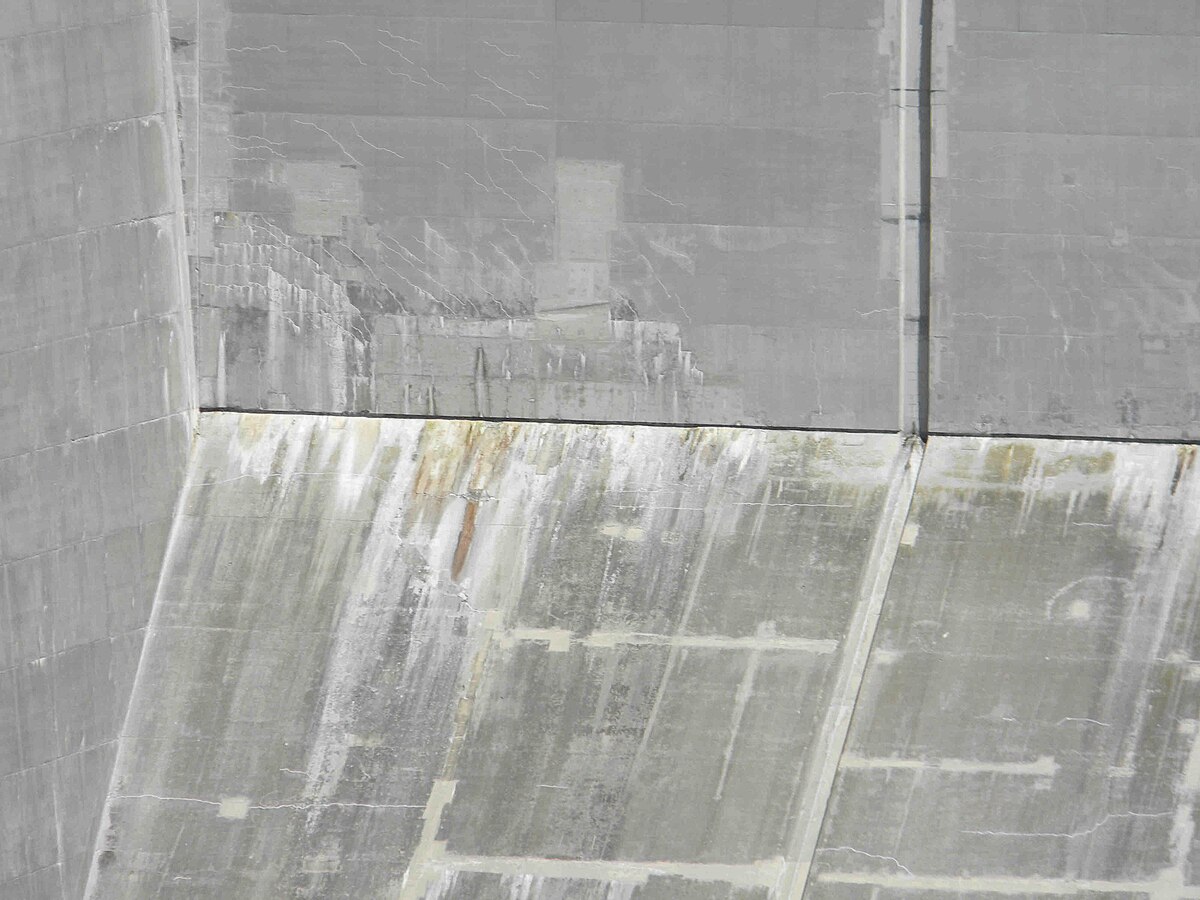- Jul 12, 2015
- 32
- Pool Size
- 15000
- Surface
- Plaster
- Chlorine
- Salt Water Generator
- SWG Type
- CircuPool SJ-20
Howdy!
My pool has raised spa and the pool itself has partially exposed walls. I started noticing quite a few hairline cracks in the tile grout. On its own it would not raise much of concern, but later I noticed calcium buildup along these cracks. From my understanding the only way it would happen if water regularly gets into it and dries there. In addition, I noticed cracks in the coping stones' grout in these areas as well, so it appears to part of the same process.

A couple weeks ago I noticed something more alarming. On the exposed wall I have stucco and paint on top of the stucco. There are several very tiny cracks showing up through the paint. And all of them have the same issue - calcuium build up lifts up the paint until paint gives up and shows up as a crack. One crack I followed all the way from the tile grout to the soil level and confirmed that tiny crack shows up on the outside face of the gunnite shell. And again - same white buildup around it in there.

I am aware of shrinkage cracking. But the fact there is a white calcium buildup going on made me think it is actually a crack through the whole shell and not just a surface one. I did not notice cracks in the plaster, but plaster is pebbletec and it is somewhat hard to see around pebbles. Also, if my understanding is correct, plaster itself expands a little when under water, so it might hide these tiny cracks.
These cracks are also more noticable towards to top of the wall.
I am still trying to figure out if there is a leak, but the pool certainly does not lose a whole lot of water right now. Dye test did not show any significant water movement around tiles with cracks and calcium deposits. The way I found all these issues are white calcium buildup itself around all these tiny cracks (and there are quite a lot of them). Calcium deposits do not showup on the grout without cracks by the way.
I will certainly bring PB while it is still under warranty, but after the history of this project and their crappy overall work, I have little to no trust for them. So wanted to hear community's thoughts on these. Are these cracks going to cause problems long term? What would be the right handling of these?
PS: also, if someone could suggest how I could stop that calcium building up everywhere water dries - that would be great on its own =) It is very tough to get rid of even with SS brush, and I am wary of using acid for cleaning it off, as acid will eat out grout as well if I understand correctly.
My pool has raised spa and the pool itself has partially exposed walls. I started noticing quite a few hairline cracks in the tile grout. On its own it would not raise much of concern, but later I noticed calcium buildup along these cracks. From my understanding the only way it would happen if water regularly gets into it and dries there. In addition, I noticed cracks in the coping stones' grout in these areas as well, so it appears to part of the same process.

A couple weeks ago I noticed something more alarming. On the exposed wall I have stucco and paint on top of the stucco. There are several very tiny cracks showing up through the paint. And all of them have the same issue - calcuium build up lifts up the paint until paint gives up and shows up as a crack. One crack I followed all the way from the tile grout to the soil level and confirmed that tiny crack shows up on the outside face of the gunnite shell. And again - same white buildup around it in there.

I am aware of shrinkage cracking. But the fact there is a white calcium buildup going on made me think it is actually a crack through the whole shell and not just a surface one. I did not notice cracks in the plaster, but plaster is pebbletec and it is somewhat hard to see around pebbles. Also, if my understanding is correct, plaster itself expands a little when under water, so it might hide these tiny cracks.
These cracks are also more noticable towards to top of the wall.
I am still trying to figure out if there is a leak, but the pool certainly does not lose a whole lot of water right now. Dye test did not show any significant water movement around tiles with cracks and calcium deposits. The way I found all these issues are white calcium buildup itself around all these tiny cracks (and there are quite a lot of them). Calcium deposits do not showup on the grout without cracks by the way.
I will certainly bring PB while it is still under warranty, but after the history of this project and their crappy overall work, I have little to no trust for them. So wanted to hear community's thoughts on these. Are these cracks going to cause problems long term? What would be the right handling of these?
PS: also, if someone could suggest how I could stop that calcium building up everywhere water dries - that would be great on its own =) It is very tough to get rid of even with SS brush, and I am wary of using acid for cleaning it off, as acid will eat out grout as well if I understand correctly.









